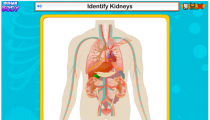With so many ways to use the skills learned in…

Homophone Challenges and Worksheets for Your Mastermind Kid
Teaching kids the importance of pronunciation is itself a difficult feat. Their young minds might not be able to comprehend the level of information you are teaching them. On the other hand, if the same information is disseminated in a fun and easy way, the kids will not only enjoy the learning process but also grasp the concept quite easily.
Nevertheless, there are always challenges that young kids may encounter when learning proper pronunciation. As they move on to learning grammar skills, they might find things quite difficult and there’s no doubt about that. The only way you’ll be able to help them is by starting slow and taking one topic at a time. Start by working on Phonetics; this way, kids will learn how to pronounce the words before they get to move further on the topic. It’s important that they understand the ways to pronounce each word and how to use tongue and lip movements, vocal cords and breath. The teachers will be helping the kids in school but parents should work along with them. The kids must be made ready to move on to the next level. Once they start pronouncing their words properly, it’ll be the perfect time for them to learn homophones.
What are Homophones?
Homophones are one or two words that are pronounced the same, have different meanings, are from different origins, and are often spelled differently too.
Why are They Important?
An incorrect homophone can cause confusion and is capable of changing the entire meaning of a sentence. For example, check out the sentences below. The first sentence shows what the kid really meant to write and the second sentence shows what they wrote instead:
I miss my hair. I miss my hare.
Homophone Worksheets
If the kids don’t learn the meanings of homophones, they will continue using the wrong words in wrong situations. This may lead to poor grammar skills and their test results will also suffer. So it’s better to start on developing these skills from a young age. And the best tool for that will be homophone worksheets.
There are many resources that you can use to help teach homophones but Turtle Diary has specially designed homophone worksheets to suit the needs of kids in early stages of learning. The worksheets are easily accessible and offer easy to understand content that is both fun and enlightening to the children.
Tips to Teach Homophones
You might already be using different ways to teach kids about homophones, but the following tips will help you effectively teach the topic.
- Have the kids learn the meaning of each homophone. Make a list of common homophones, divide them in groups, and assign kids to learn 5-6 meanings a week.
- Ask the kids to keep a list of homophone pairs in their notebooks at all time. This way, they can practice homophones any time they want.
- Dictate sentences that contain homophones and you’ll know which children are having trouble understanding the similar sounding words.
Fun Ways to Teach Homophones
Grammar classes can get quite boring. Kids need to enjoy the lessons so that they retain the most of what they learn. There are numerous ways in which you can help make the dull lessons quite a success with young kids.
- Use homophone based riddles to ignite kids’ interest in the topic. For example; What do you call a runaway insect?
A flee flea
- Use the classic ABC Homophones game. Ask kids to list down homophones pairs that start with each letter of the alphabets.
- Distribute homophone pairs flashcards among the kids and ask them to match their word with the correct homophone.
Read more about Fun ways to teach Homophones and also check out this List of Homonyms. Don’t forget to share the post and help others in spreading the knowledge. Good day!





